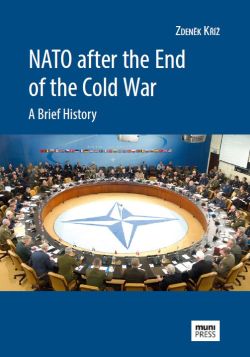NATO after the End of the Cold War
NATO after the End of the Cold War
A Brief History
Author(s): Zdeněk Kříž
Subject(s): Politics, Security and defense, Military policy, Geopolitics, Peace and Conflict Studies
Published by: Masarykova univerzita nakladatelství
Keywords: NATO; Cold war; adaptation process; military adaptation; military alliances; strategic thinking; Russia;
Summary/Abstract: Since the end of the Cold War, NATO has been going through a permanent adaptation process that has changed it beyond recognition. If the Alliance had wanted to survive the Warsaw Pact, it did not have any other choice. As regards the beginning of the permanent NATO adaptation process, it is possible to regard the adopting of the 1990 London declaration. Today’s shape of NATO differs from its form in the Cold War substantially. The Alliance’s tasks have been extended significantly, as well as its territorial range and the number of its members. Rob de Wijk points out that the successful adaptation of NATO to the new post-Cold-War realities is an unprecedented event because traditional military alliances were dissolved together with the expiration of the reason for their existence in the past. (Wijk 1998: 14–18). However, one should pay attention to the fact that NATO has never been a merely military alliance based only on the idea of collective defense. According to Karl Deutsch, the Alliance has been an organization of states sharing common values, which makes war among members impossible. He calls this kind of alliances “security community”. (Deutsch et al. 1957; Adler – Barnett 1998) This paper aims to describe and analyze the main tendencies in the NATO transformation after the end of the Cold war and will proceed as follows. The second chapter will pay attention to the changes in the NATO strategic thinking. The third chapter will focus on the NATO enlargement followed by the fourth chapter dealing with the NATO-Russian relations. The fifth chapter is devoted to the NATO expeditionary operations and the sixth will provide a survey of the NATO military adaptation. The last chapter will summarize the main outcomes of the NATO adaptation after the end of the Cold War. As far as methodology is concerned, procedures typical of history science will be used in this paper.
- E-ISBN-13: 978-80-210-7917-5
- Page Count: 126
- Publication Year: 2015
- Language: English
- eBook-PDF
- Table of Content
- Introduction

